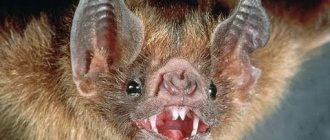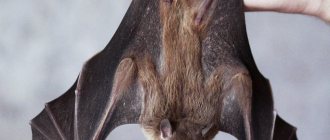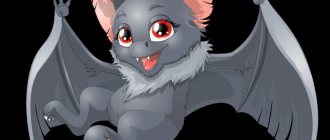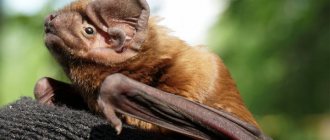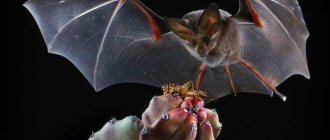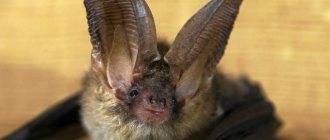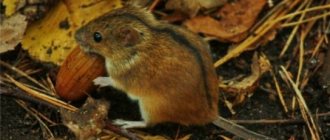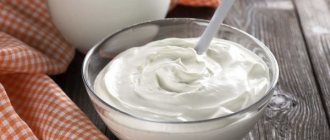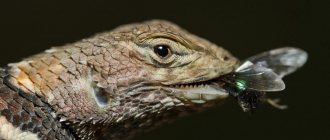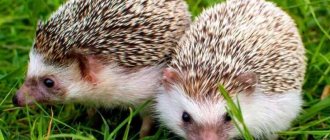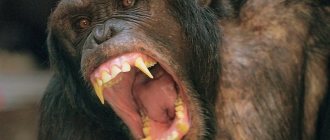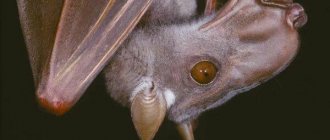Old fairy tales firmly connect the image of bats with evil spirits. These unusual animals were sure to live near a lonely hut on the edge of the forest. Witches used them for their potions, and they could even set them on an unwanted traveler. And then these monsters drank every drop of a person’s blood.
Where this opinion came from, whether it was based on fear of their nocturnal lifestyle and unusual appearance, is no longer clear. But even now, when it is known that they feed mainly on insects and fruits and even vampire mice do not attack humans, many people still do not like them.
Bat food
Before going into detail on this topic, it is important to note that different species of mice eat a variety of foods.
The predominant number of these animals are insectivores , many prefer small animals.
A very small number are piscivores, and there are only three species that drink blood and a few vegetarian species that prefer fruits and pollen .
Despite these different preferences, all bats (except vegetarians) hunt in the same way.
When a predator flies, it constantly emits ultrasound through its mouth or nose (depending on the genus).
When the mouse catches the “echo” reflected from its victim, it becomes silent for a moment and grabs the future food.
Age from 0 to 20 days
Temperature
Such an animal needs to be warmed. Maintain a constant temperature of about 37 degrees. Thermal mats for animals or just a stable bottle of warm water wrapped in a towel (or sock) are suitable for this. But don't overheat!
Nutrition
Very young mice are fed goat's milk or a special milk formula for puppies (can be found in pet stores), which is prepared according to the recipe indicated on the package. Cow's milk is not nutritious enough for baby bats, and they will not be able to fully develop on it. The same applies to milk formulas for baby food - the animal lags behind in development.
It is very important that the milk is fresh, boiled, and the mixture is prepared immediately before feeding. Do not leave the prepared formula until the next feeding. Do not add eggs or other ingredients to milk or formula - there is a high risk of intestinal infection and death. It is also undesirable to change one milk to another. Equipment must be thoroughly washed, sterilized or boiled.
Vitamin and mineral supplements are often necessary, especially if you are feeding milk rather than formula. Look in your pet stores for vitamin-mineral complexes for birds without gastroliths (sand, pebbles, etc.). The dosage will depend on the chosen complex. This question needs to be clarified individually with our specialists.
Feeding mode
Babies are fed every 2-3 hours both day and night. Adults - every 3-4 hours. If the animal did not have time to digest the previous portion, and this is noticeable by the enlarged tummy, increase the interval between feedings.
When feeding, hold the animal so that the head is slightly lower than the body. Then spilled milk will not stain the body. Feed the animal slowly.
With age, the interval between feedings increases.
Amount of food
Cubs of different species and even different ages can differ significantly in weight, which is why they require different amounts of food. For this reason, we cannot clearly say how much your baby bat should eat.
If you know its weight, you can use the formula to calculate the approximate portion of food: weight of the animal in grams * 0.05 ml. So, per serving for a 10-gram animal you will need 10 g * 0.05 ml = 0.5 ml of milk or mixture. We emphasize that this is an approximate portion, everything is individual. If the animal eats with gusto and then starts to turn away, it means it’s full, don’t be upset.
It is convenient to track the portion of food eaten using a scale on the syringe. It is very important not to overfeed the animal . Babies often cannot cope with large amounts of food, and bloating begins, which often ends in death. Therefore, feed the animal in small portions, but often. In 1-2 days of observation, you will select suitable portions and feeding regimen for him.
Insectivores
Mice that eat insects don't eat everything.
Each animal has its own taste preferences. Some people love bugs and midges, some love butterflies and moths, while others enjoy eating small spiders or enjoying wood larvae.
Mice can hunt such small prey either in groups or individually.
Mice only catch insects in the air. Thanks to ultrasound, they calculate the location of the insect and capture it.
Some species prefer to immediately swallow the prey in the air, others grab it with their wings, as if it were a net or blades.
Others use their tail membrane. They form a net and catch the insect with it.
But there are very few such bats. Usually hunting and eating occur at the same time, but sometimes mice throw a “dinner party” for a family or even a colony.
What to feed?
All European bats eat live insects. They cannot “baby puree, cat food, boiled meat, eggs, honey, etc...” Even if an animal eats a piece of meat or banana, this does not mean that this food will benefit it. He may develop intestinal problems in the future and eventually die. Bats eat milk only in the first month of life (early summer). All bats found in winter are already adults and do not need milk.
They do not gain fat on maggots and bloodworms (larvae of flies and mosquitoes), so feeding is pointless. The best food for bats is the larvae of mealworm beetles and zofobas , which can be found in some pet stores (by calling in advance). You can also feed tropical cockroaches (cut up) and banana crickets.
mealworm larvae
Zophobas larvae
Carnivores
Bats that prefer flesh look very different from their herbivorous comrades. These animals have fairly sharp teeth and large body sizes.
They prefer small animals as food: lizards, frogs, mice (not flying ones) and some small birds. For example, warblers.
Help: Somehow, flying animals manage to determine which frogs can be poisonous and which cannot. There was not a single case where predators made a mistake in their choice.
Despite this diet, carnivorous mice very often feed on insects. They are not averse to eating beetles or butterflies. The method of hunting their prey is the same as that of insectivores.
The difference is that such a prey cannot be eaten in the air, so the bats rush at it, press it with their body and wings, which form a kind of net and then kill the prey.
Bats are natural hunters. In nature, they bravely fight with prey, sometimes larger than the weight of the animal. Some species of bats feed on rodents, frogs, birds, scorpions, spiders and even fish, which they deftly pick up right from the surface of the water with the help of sharp claws and a tail membrane. However, in America there are species of bats that feed on flower nectar and fruits, as well as real vampires that drink the blood of large animals.
Feeding insectivorous bat pups
Bats are natural hunters.
In nature, they bravely fight with prey, sometimes larger than the weight of the animal. Some species of bats feed on rodents, frogs, birds, scorpions, spiders and even fish, which they deftly pick up right from the surface of the water with the help of sharp claws and a tail membrane. However, in America there are species of bats that feed on flower nectar and fruits, as well as real vampires that drink the blood of large animals. Russian bats feed on insects. Their diet may consist of mosquitoes, worms, midges, caterpillars, beetles, crickets, wood grubs, flies, grasshoppers, ants and cockroaches. Thus, they provide benefits by eliminating pests.
However, it happens that winged animals, getting injured or waking up during hibernation, fall under the temporary care of humans. And while caring for adults is relatively simple, feeding orphaned babies requires special skills and diet. What to feed a rescued bat during wintering or rehabilitation, how to prepare a mixture for the cubs - this will be discussed further.
Determination of age. To begin with, it is important to determine the approximate age of the winged patient. So, in adult animals the fur is thick and fluffy, while in babies it is short, silky or completely absent. Thus, cubs up to three weeks of age require an exclusively milk diet, up to six weeks - the inclusion of a small amount of a mixture of mealworms, up to seven - both previous types of food and an introduction to live food, and after that - food consisting entirely of insects.
(Fig. 1) Baby bat
(Fig. 2) Adult bat
Water. Whatever the age of your ward, there should always be a container of water in the cage or incubator, which must be changed daily. Optimal diameter –
no more than 5 cm, depth - no more than 2 cm, so that if an animal gets into a bowl, it can easily get out of there. Observe and make sure that the winged patient actually drinks water. If for some reason he cannot do this on his own, at first you will need to feed him from a syringe without a needle or, in case of severe dehydration, replenish the fluid subcutaneously with saline. For the first option, use a 1 ml tuberculin syringe without a nozzle or with a flexible elastomer cannula. Special feeding tubes for feeding rodents are also perfect. Photo 3 shows the author of the article feeding a bat from a syringe through a cannula.
(Fig. 3) Water supply through a syringe with a flexible cannula
Correct position. Pay attention to the position of the animal in Fig. 3: vertically, “sitting” on the ring finger of the hand, the back rests against the middle and index fingers, and the thumb fixes the animal on the chest under the chin. In this case, the ward is wrapped in a fabric roll up to neck level. This position is the most comfortable and safe for both you and the animal, and most importantly, it helps to avoid its release and protect you from bites. If you are not vaccinated against rabies, wear gloves as well.
Adult diet. For adult animals temporarily kept in captivity, live food such as mealworms, zoobass and crickets is suitable. However, it is important to decapitate the zofobas first to avoid its bites. If the bat does not feed on its own, tweezer feeding will be required at first. You can also squeeze out some of the insides of the zoophobass so that the animal can smell it and taste the food. Teach your child to eat on his own: place several mealworms in a wide container with low sides, and then each time bring the tweezers with the food closer and closer to the bowl, gradually lowering it to its bottom. Soon the animal will get used to finding food in it without your help. Do not forget to feed live food with fresh vegetables so that your winged ward receives the necessary vitamins along with it.
You need to feed the bat during its active period - in the evening, preferably after dark. The approximate norm for an adult animal is 4-8 zofobas or 6-12 mealworms. But look at its physical condition: for example, bats that wake up in winter need energy replenishment and weight gain, and therefore their norm can be significantly increased. And, conversely, well-fed animals preparing to return to the wild should not gain excess body weight, as otherwise this will affect their ability to fly. Ideal physical shape is the same width of the abdominal and chest areas. Additionally, one-time or in a course, you can give a micro-drop (at the tip of a thin food tube) of calcium in the form of syrup.
Feeding orphaned babies. As mentioned above, cubs up to seven weeks of age require a milk diet. However, regular milk is not suitable, since bats only digest soy or goat milk well. Use any soy or goat milk based infant formula. So, it could be “Infasa”, “Fitalakt”, “Nutrilak-soy” or their other analogues. It is good to add fresh goat milk to the mixture. The recipe is as follows:
· 1.5 scoops of infant formula
· 100 ml goat milk (if available)
· 2 tsp. egg powder or 1 white
· A quarter teaspoon of human baby probiotic in powder form
· 2 ml of veterinary food supplement, for example, Megaderm or analogues (preferably)
The finished mixture can be stored in the refrigerator for up to a day. Before each feeding, it must be heated in a water bath (in a container over hot water). It is given from a syringe through a thin plastic cannula/feeding tube or dripped onto a sponge applicator, the tip of which is placed in the baby’s mouth. The tip of an eyeshadow applicator is ideal.
The main risk when feeding is the danger of overfeeding. Babies at this age do not yet have a “stop signal,” so it is important to visually control the amount they drink. The abdomen should not resemble a ball and exceed the volume of the chest; ideally, it is good for it to be slightly rounded.
The feeding regimen of baby bats differs from that of flying foxes in that they require formula as their stomachs empty. In cubs without fur, food remains are visible even in the light; in older ones, you can carefully feel them. If you are not sure, just stick to an interval of 4-5 hours or listen to your ward: accustomed to people and the regime in captivity, they themselves begin to make sounds when they are hungry, asking for food.
After feeding, gently move a piece of toilet paper or tissue over your pet's genital area to help him go to the toilet.
Diet from 2-3 weeks. As soon as the baby begins to actively grow fur, begin to accustom him to more adult food. The mealworm mix is prepared as follows:
· Half a cup of frozen mealworms or zoobasa
1/6 cup cold water
· 1/3 baby formula based on soy or goat milk
· Half a teaspoon of any vitamin supplement for animals - in powder form
· 1 tsp. veterinary mineral supplement – for example, “Missing Link” or equivalent
· 1/6 tsp. veterinary dental liquid - for example, “Petkin Liquid Oral Care” or equivalent. The fact is that dark plaque on the teeth of bats is not uncommon; it occurs when they begin feeding on an insectivorous diet, and therefore it is better to use such a means of protection. Instead, you can later apply a micro-amount of dental gel for cats and dogs directly to the mealworm.
All ingredients are ground in a blender to a puree consistency. Pour the mixture into ice cube trays and freeze. Before each feeding, take out a cube (or more, depending on the number of animals) and defrost it in a container placed in another with hot water. The defrosted mixture can be stored in the refrigerator for up to three days; it cannot be re-frozen.
From the age of six weeks, the mix is given from a syringe without a needle in an amount of approximately 0.6-0.9 ml (depending on the size of the animal. It is most convenient to use a tuberculin volume of 1 ml. At the same time, do not forget to monitor the volume of the abdomen to prevent overfeeding. (Fig. 4).
After feeding by hand, be sure to wipe the area around the animal's mouth and chest with a piece of toilet paper or a napkin to prevent fungal infections (Fig. 5).
Before this, the main diet should be formula milk, and the mixture described above is used only as an additive in very small quantities, gradually increasing them. Later you can alternate the menu.
(Fig. 4) Syringe feeding a mixture of mealworms with additives
(Fig. 5) Hygiene after feeding
Diet from 4-6 weeks. From this age, you can begin to add live food to feeding with formula milk and mealworm mix. In the first days of getting to know it, it is better to offer worms cut into two or three parts, after which - whole ones; for starters, you can offer them non-living, thawed ones, gradually accustoming them to living ones. A headless zoobass would also work.
From the age of 7 weeks, the animal should be completely switched to live food.
Feed storage. Mealworms and zofobas can be bred in captivity. You can find enough information on how to organize this process on the Internet. In any case, since sometimes, especially in small towns, live food can be difficult to find, it is better to always have frozen food in reserve. The worms are defrosted in containers filled with a small amount of cold water. (Fig. 6). This will take no more than 10 minutes. Do not add warm or hot water, otherwise the heat will “cook” them. Thawed food should not be re-frozen.
(Fig. 6) Defrosting zofobas
Important: always warm the animal before feeding. To do this, hold it in your hand, wrapped in cloth, for 2-5 minutes. The vibration of his muscles will tell you about the warming process. When it stops, the animal is ready to eat.
Bon appetit and quick rehabilitation to your flying charges!
Photo
Look at the photo: what do bats eat?
Age: more than 20 days
With normal nutrition at this age, the cub is already covered with hair and has teeth. They are still smaller than those of adult bats, but sufficient to chew solid food, namely insects.
Temperature
A 24-hour heating pad is not needed. Warming is only necessary after feeding. The cub learns to regulate its body temperature - it cools down when it sleeps and warms up when it wakes up. Before feeding, you need to give the animal time to warm up. When warming up, the bat “shivers” with its whole body.
Nutrition
If your bat's teeth have grown enough to chew solid food, it's time to start feeding insects. Mealworm larvae are best suited for this. Complementary foods are gradually introduced into the animal's diet. That is, the main food is still milk or formula.
The first evening of complementary feeding - let you try the pomace (entrails) of the mealworm, no more than half of the insect, a couple of bites. Most likely, the animal will not understand that you are offering it food, since it has not encountered insects before. You will have to tear off the insect’s head and apply some of the insides to the “lips” of the animal. When he licks them, slip him some more pomace. Afterwards you give him some food that is familiar to him - milk or formula. Do not leave the animal unattended, since mealworms are a new food for the intestines, the animal is just learning to digest it, and there is a risk of tummy problems. Watch the stool and the behavior of the animal. Subsequent feedings are milk feedings, as usual.
The next evening, offer the baby bat a slightly larger portion of mealworm innards. And so over the course of several days you increase the portion of the pomace. When the animal begins to eat them willingly and digest them without problems, let him gnaw on the chitin of the mealy beetle, just a little. Again, he doesn’t know how to chew yet, so he will do it clumsily. Supplement with entrails or milk, and then again observe how the intestines react to new, more solid food. In the future, allow the animal to eat larger and larger pieces of mealworms.
In this way, you will gradually teach the baby bat to eat and digest insects. Once he has successfully eaten and digested the mealworms, you can gradually increase the amount of mealworms in the diet while decreasing the amount of milk or formula. Often these are evening and night feedings with insects, and morning and afternoon feedings with milk or formula.
Don't forget about vitamin and mineral complexes. A growing animal needs them every 2-3 days. The dosage is individual and depends on the complex itself and the weight of the bat. Contact our specialists.
If you picked the animal at 3 weeks of age, has good teeth, but does not yet fly, feed it with milk or formula for 2-3 days, as described for mice aged 0 to 20 days. Only when the animal is able to digest dairy food normally, start feeding with insects, as described in this section.
Piscivores
Important: There are only two species of bats in the world that eat fish . These are the greater and lesser harelips.
These mammals live in Central and South America. They feed on insects, frogs and lizards, but also fish. This is what distinguishes them from carnivores. Scientists have proven that harelips physically cannot detect fish under water, but react to its slightest fluctuation.
Fish lovers hunt in the following way: when night falls, they fly to a pond and begin to slowly circle over it; at the slightest disturbance in the water, the mice rush down. At the same time, their hind limbs touch the water, the rest of the body remains strictly above it.
It is believed that in addition to the harelips, the bat and the Indian false vampire can also feast on fish. However, no one knows the reasons for this change in tastes.
How to feed?
If you pick up an animal in winter, it may indeed be weakened. To do this, you need to weigh it. Weight is an indicator of fatness. If the rufous noctule weighs less than 27 grams, it needs to be fed. For late leather it is 25 grams, Kulya bat - 7 grams, two-color leather - 13 grams.
First of all, you need to drink water. As much as the animal can drink. From a syringe, or from a spoon or drinking bowl for rodents.
Before feeding, the bat needs to be “warmed” for 10-15 minutes, this can be done in your hands (with gloves) or near a radiator. She will wake up and be ready to drink and eat. She may shake (this is rapid breathing), try to escape and squeak. This is normal and necessary so that the animal can then digest what it has eaten.
You can hold the animal in your hand or cover it from above with your hand without pressing it to the surface. Insects should be collected using tweezers. During the first feeding, it is better to cut the insects in half and give the juicy part first. Please note that in nature, bats feed on the fly, so they may not immediately realize that you are giving them food. This requires patience and dexterity. Sometimes you need to directly put an insect in your mouth so that the animal understands that it is food. Crickets and cockroaches need to be crushed so that they do not run away, and then given to the animal.
After feeding, you need to offer the animal water. The second and subsequent feedings are already easier and faster, since the bat understands that food is being offered to it.
Vegetarians
Nature is so amazing that it created bats that prefer fruits and nectar. But there are very few such mice. This type of feeding is mainly preferred by fruit bats.
Important: Fruit bats also belong to the order Chiroptera, but they should not be confused with bats, since they have very significant differences in their aircraft. Almost all fruit bats are larger than their relatives, and their diet consists only of herbivorous food.
Among mice, only a few prefer fruits with nuts , for example, leaf-nosed mice. They feast on insects, fruit pulp, flower nectar and nuts. Many favor pollination.
However, unlike fruit bats, leaf-nosed bats are not averse to eating lizards, and some species are even omnivores. The muzzles of fruit eaters and nectar lovers are elongated, the teeth are completely undeveloped, and the tongues are much longer than those of their relatives.
General Content Rules
It is convenient to keep a baby bat in a box or box with access to air and natural light (but not direct sunlight). Ordinary cages are often not suitable, since the animal can crawl between the twigs. It’s a good idea to place and hang pieces of fabric in the shelter so that the animal can hide in them. If you don’t find a convenient box, then a small fabric bag will do.
The animal must be kept out of the reach of pets and children!
Bats often have ectoparasites - ticks, fleas, etc. They are not dangerous for humans and domestic animals. If the animal is weak, does not wash itself or is heavily infected, it is necessary to help it get rid of parasites. They can be removed with tweezers or a damp cotton swab. If you see the need for treatment with special means, contact us for further consultation.
Vampires
There are very few blood-eating bats in the world—only three species. Common, bushy-legged and white-winged vampires.
Important: These bloodsuckers do not drink human blood. The maximum they are capable of is to bite a person in self-defense.
The entire body structure of these bats is adapted to their nutrition.
They have a short nose with infrared receptors, very large incisors and grooves on the lower jaw through which blood flows.
Important: Vampires are the only bats capable of moving on land. Having found the victim using ultrasound, the bloodsucker approaches it on the ground, uses its receptors to calculate the best place to bite and attacks.
These animals do not suck blood, but lap it up . Vampires' saliva contains a special enzyme that prevents the victim's blood from clotting. Bats cannot drink large amounts of blood, so this factor should not be scary. But they are carriers of dangerous diseases that can be transmitted to livestock, which they love very much, or to humans.
Bats are some of the most amazing creatures on the planet. They are the only mammals capable of flight, each species has special social relationships, and all mice are very caring towards children and members of the colony.
Bats are the only mammal that naturally can fly. There are more than 700 known species of bats, most of which are insectivores. To survive the cold season, without having a food supply, these winged animals effectively adapt to the conditions of their environment. How and where they winter - read in our materials.
Living conditions at home
The living conditions of bats outside the wild should be as close to it as possible.
We also recommend reading:
The largest dog breeds What is domestication in animal husbandry Why you should get a cat: reasons voiced by scientists Euthanasia of animals
About the home
Chiropterans live mainly in caves, mountains or attics. One wall of the enclosure should be made of stone or relief, reminiscent of a gorge. The enclosure should be at least 2.5x3 m. There should be a lot of greenery inside. It would be ideal if the enclosure is closely adjacent to a standard tree.
About temperature
When designing an enclosure, be sure to take care of the temperature inside it. Bats are very thermophilic, so the temperature should be +30 degrees. Prolonged stay in the cold entails disruption of digestion and sleep, which can lead to death. The enclosure must be equipped with a system of manholes where the small animal can warm up. With the arrival of seasonal cold weather, bats hibernate. During this period they are placed in a warm place.
